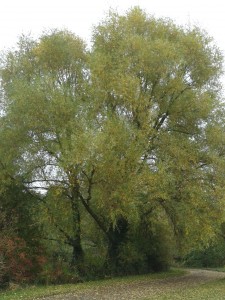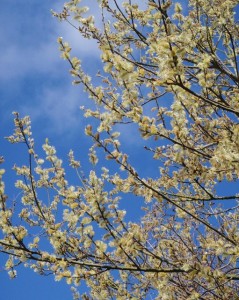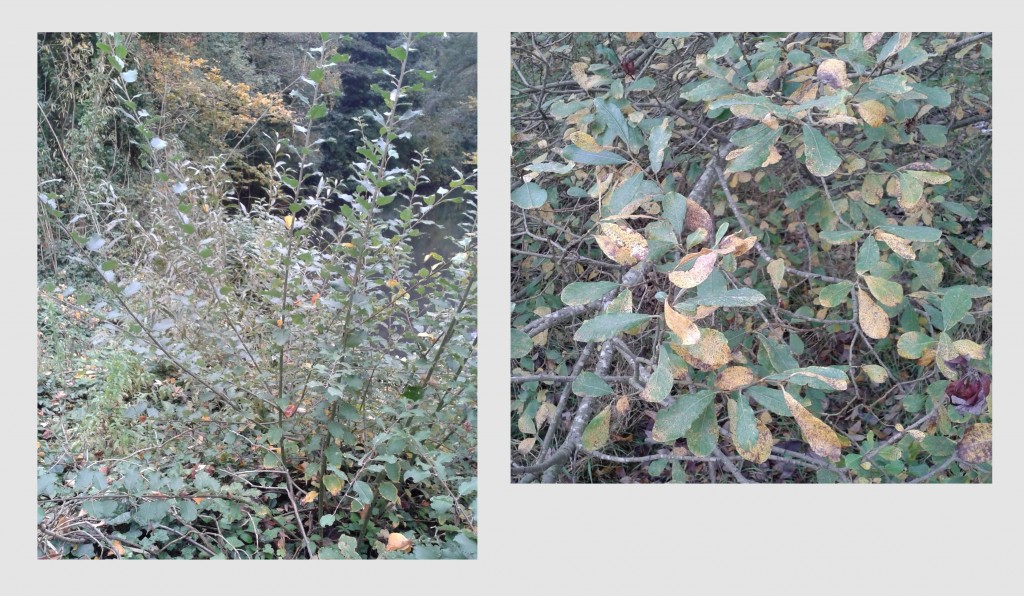We’re all familiar with Willows (Salix) and Poplars (Populus) aren’t we? But how well do we really know the species? They’re such a prominent feature in the landscape, particularly along river-banks and, as here on Campus, around lakes, that we may think we’re well acquainted with them, however …
Willows big and small. It’s a family of all trees and shrubs, and it’s no surprise that they can be very large, P. nigra gets to 35m tall, but equally, they can be very, very small, S. herbacea is only 6cm (Meikle, 1984). Until recent DNA analysis extended it, the family comprised just these two familiar genera.
Why are they such a headache? Willows are notoriously difficult to identify, with serious hybridisation issues. Poplars don’t hold back either, but there are a lot less of them (30-40 species compared to 385 willows, Heywood et al., 2007).
Stace in his Flora (Stace, 2010) and Meikle (Meikle, 1984) leave out many of the hybrids, because of identification difficulties or their rarity. Both authors recognise numerous willow subspecies and varieties, to add another layer of complexity. Furthermore, coppiced stools, as many campus plants are, produce atypical and, therefore, hard-to-identify growth.
The icing on the identification cake arises courtesy of the unhelpful habit, in some species such as this, S. caprea, of producing catkins before the leaves emerge in Spring, when of course we need both together to confirm identities.
Beautiful willows. These are goat willow catkins, their evocative Spring display is the up-side of flowering before the equally-essential-for-identification leaves emerge.
A cure for any headache. Another upside of the plethora of willows is the spectacular display of Winter colours in their young twigs. All of these are on Campus. And, by the way, willows were the original source of Salicylic Acid, the active ingredient in Aspirin.
When is a goat not a goat?
This plant, on the left, regenerating from a coppiced stool growing near the lake, is S. caprea Goat Willow, or at least it’s got a lot of goat in it. And this species, on the right, is S. cinerea ssp. oleifolia, the Grey Willow or Sallow. At least the majority of it is. It’s growing in the lawns behind RSSL.
The leaves, on the left here, display several of the key S. caprea characters – shape, margins, and indumentum notably. And, the stems are clearly bicoloured. On the right, S. cinerea is a shrub. Leaf shape, rusty hairs beneath, striated wood and other characters suggest this identity.
I am reasonably confident of these identities, as they key out and fit the description in Stace, 2010 and Meikle, 1984, but …
Attributions
All photographs were taken by P. Rooney and may be used freely. Except, Pussy willow, Barton Hill Way (Derek Harper) / CC BY-SA 2.0
References
Heywood, V. H., Brummitt, R. K., Culham, A., & Seberg, O. 2007. Flowering plant families of the world. Royal Botanic Gardens, Kew.
Meikle, R.D., 1984. Willows and Poplars of Great Britain and Northern Ireland. BSBI Handbook No. 4. Botanical Society of the British Isles, London.
Stevens, P. F., (2001 onwards). Angiosperm Phylogeny Website. Version 12, July 2012 [and more or less continuously updated since]. http://www.mobot.org/MOBOT/research/APweb/. Accessed 23/10/12.







Dear Peter,
Your email does not seem to work so I contact you this way;
Please check under the “not accepted by” tabs:
http://apps.kew.org/wcsp/nonacceptedRef.do?name_id=285645
Best wishes,
Rafael Govaerts